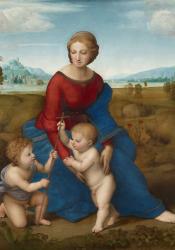Renaissance Painting Techniques
The Renaissance brought about a new tradition in the field of art. Artists sought to achieve a greater sense of realism and naturalism in their paintings, as opposed to the rigid and stylized characteristics of the preceding medieval and byzantine periods. Artists were aided in achieving this goal in part through the development of oil paint, which in turn gave rise to the development of new painting techniques. The most important techniques that were established during the renaissance were sfumato, chiaroscuro, perspective, foreshortening and proportion. The advent of these techniques marked a significant shift in art history. Sfumato, a term coined by Leonardo da Vinci, refers to the subtle blending of colors and the blurring of sharp lines. Chiaroscuro is the use of strong contrast between light and dark to create depth. Perspective, foreshortening and proportion all relate to the use of mathematical principles to establish lines used to create the illusion of depth. Used in combination, these techniques greatly contributed to an artist’s ability to create three dimensional figures on a two-dimensional plane.
Sources
Gombrich, E. H. Art and Illusion: A Study in the Psychology of Pictorial Representation.
Princeton University Press, 1960.
Wikipedia, the free encyclopedia. “Renaissance Art.” Wikipedia, Wikimedia Foundation, Inc. , 6
Mar. 2018, en.wikipedia.org/wiki/Renaissance_art#Techniques.
Image Retrieved from Wikimedia Commons, fair use

